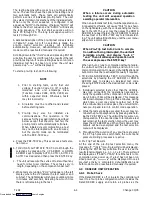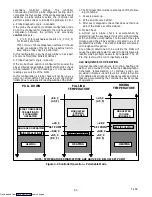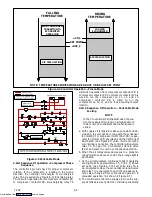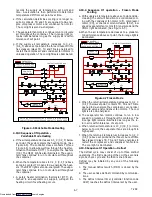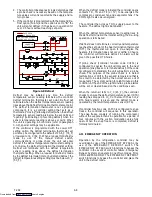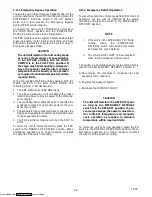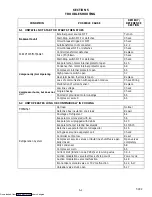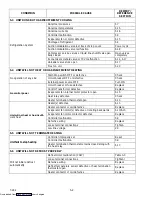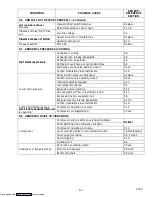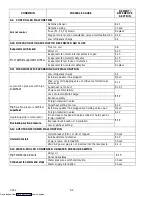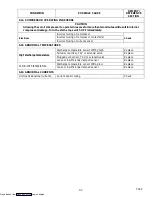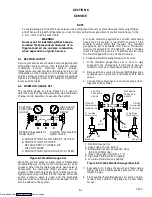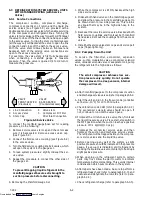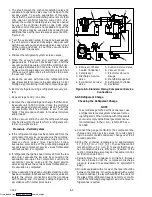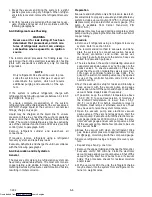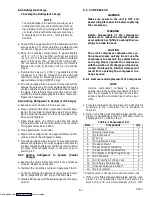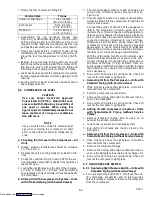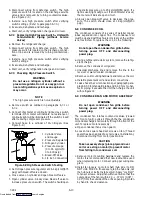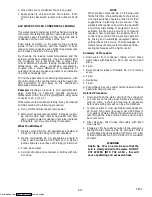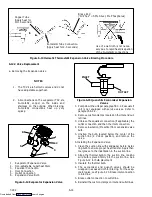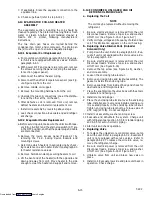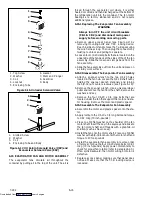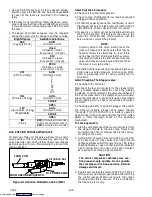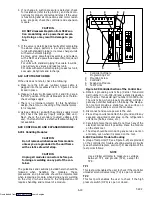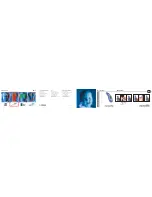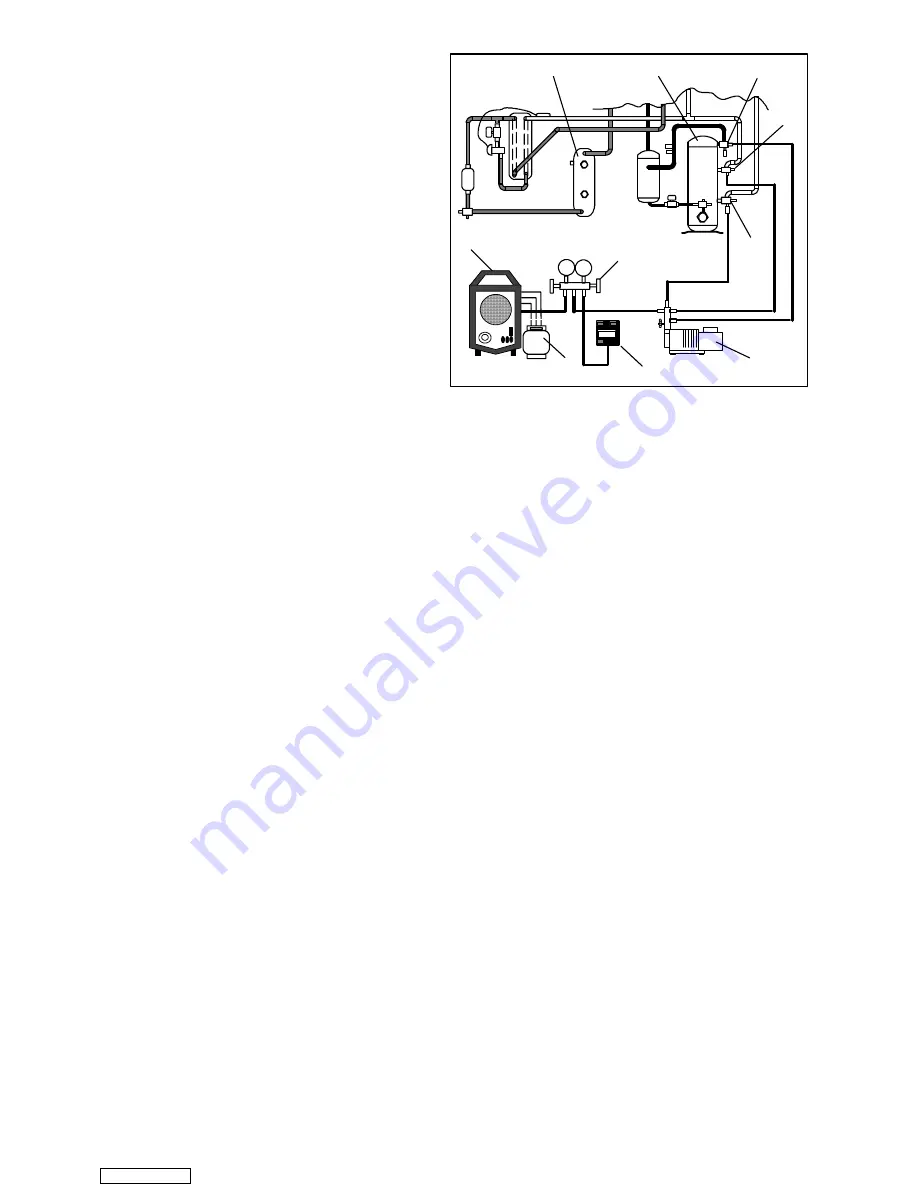
6-4
T-292
c. The area between the suction modulating valve and
evaporator expansion valve may not be open to the
access valves. To ensure evacuation of this area,
check that the suction modulating valve is more than
10% open at controller function code Cd01. If re-
quired, the suction modulating valve may be opened
by use of the controller function code Cd41 valve
override control. If power is not available to open the
valve, the area may be evacuated by connecting an
additional hose at the low side access valve (item 15,
Figure 2-2).
d. Test the evacuation setup for leaks by backseating
the unit service valves and drawing a deep vacuum
with the vacuum pump and gauge valves open. Shut
off the pump and check to see if the vacuum holds.
Repair leaks if necessary.
e. Midseat the refrigerant system service valves.
f. Open the vacuum pump and electronic vacuum
gauge valves, if they are not already open. Start the
vacuum pump. Evacuate unit until the electronic vac-
uum gauge indicates 2000 microns. Close the elec-
tronic vacuum gauge and vacuum pump valves. Shut
off the vacuum pump. Wait a few minutes to be sure
the vacuum holds.
g. Break the vacuum with clean dry refrigerant 134a
gas. Raise system pressure to approximately 0.2 kg/
cm
@
(2 psig), monitoring it with the compound gauge.
h. Remove refrigerant using a refrigerant recovery sys-
tem.
i. Repeat steps f.and g. one time.
j. Remove the copper tubing and change the filter-drier.
Evacuate unit to 500 microns. Close the electronic
vacuum gauge and vacuum pump valves. Shut off the
vacuum pump. Wait five minutes to see if vacuum
holds. This procedure checks for residual moisture
and/or leaks.
k. With a vacuum still in the unit, the refrigerant charge
may be drawn into the system from a refrigerant con-
tainer on weight scales.
Procedure - Partial System
a. If the refrigerant charge has been removed from the
compressor for service, evacuate only the compres-
sor by connecting the evacuation set--up at the com-
pressor service valves. (See Figure 6-5.) Follow
evacuation procedures of the preceding paragraph
except leave compressor service valves frontseated
until evacuation is completed.
b. If refrigerant charge has been removed from the low
side only, evacuate the low side by connecting the
evacuation set--up at the compressor suction and
economizer service valves and the liquid service
valve except leave the service valves frontseated un-
til evacuation is completed.
c. Once evacuation has been completed and the pump
has been isolated, fully backseat the service valves to
isolate the service connections and then continue
with checking and, if required, adding refrigerant in
accordance with normal procedures
6
4
5
7
D
S
10
1
2
3
8
9
1. Receiver or Water
Cooled Condenser
2. Compressor
3. Discharge Service
Valve
4. Economizer Service
Valve
5. Suction Service Valve
6. Vacuum Pump
7. Electronic Vacuum
Gauge
8. Manifold Gauge Set
9. Refrigerant Cylinder
10. Reclaimer
Figure 6-5. Standard Piping Compressor Service
Connections
6.3.5 Refrigerant Charge
Checking the Refrigerant Charge
NOTE
To avoid damage to the earth’s ozone layer, use
a refrigerant recovery system whenever remov-
ing refrigerant. When working with refrigerants
you must comply with all local government envi-
ronmental laws. In the U.S.A., refer to EPA sec-
tion 608.
a. Connect the gauge manifold to the compressor dis-
charge and suction service valves. For units operat-
ing on a water cooled condenser, change over to air
cooled operation.
b. Bring the container temperature to approximately
1.7
_
C (35
_
F) or --17.8
_
C (0
_
F). Then set the control-
ler set point to --25
_
C (--13
_
F) to ensure that the suc-
tion modulation valve is fully open. (Position of the
suction modulating valve may be checked at control-
ler function code Cd01.)
c. Partially block the condenser coil inlet air. Increase
the area blocked until the compressor discharge
pressure is raised to approximately 12 kg/cm
@
(175
psig).
d. On units equipped with a receiver, the level should be
between the glasses. On units equipped with a water
cooled condenser, the level should be at the center of
the glass. If the refrigerant level is not correct, contin-
ue with the following paragraphs to add or remove re-
frigerant as required.
Downloaded from
Summary of Contents for 69NT40-531 Series
Page 2: ...Downloaded from ManualsNet com search engine ...
Page 4: ...Downloaded from ManualsNet com search engine ...
Page 8: ...Downloaded from ManualsNet com search engine ...
Page 16: ...Downloaded from ManualsNet com search engine ...
Page 57: ...Downloaded from ManualsNet com search engine ...
Page 104: ...Downloaded from ManualsNet com search engine ...
Page 106: ...7 2 T 292 Figure 7 2 SCHEMATIC DIAGRAM Downloaded from ManualsNet com search engine ...

